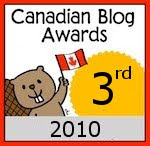MSNBC writer, Daniel Harrison on Google Wave, which reportedly heralds "either the death or the future of e-mail:"
All the average Joe wants to know, of course, is: Do I have to worry about all this Google Wave stuff or can I go back to poking people on Facebook for a few more months?See: Google Wave: What is it? Why Should You Care?
The Wave allows you to use dynamic web technologies (such live maps, automatic content generation, live news content, etc) to augment each wave conversation. This means that, unlike email, a wave has the potential to change each time you view it. The idea of creating a TIFF image of a wave is as vexing as creating a TIFF image of a Facebook page - it may never be the same twice. Time and context in the wave matter just as much as content.
...Robots are participants in a wave, just like a client or colleague, but they are fully automated. Robots can check your typing for spelling errors and fix them. Robots can “sanitize” a wave, by going back and omitting expletives from some one’s text. Robots can even write whole paragraphs in a wave on your behalf (imagine a stock broker who mentions a stock in a wave to a customer and a Robot which immediately comes behind and inserts disclaimer text about risks and assurances). And although every action a Robot makes is recorded in a wave’s XML file (so we know what was automated and what was “hand-written”) there is the potential for lots of confusion about who wrote what and when.
Gadgets are possibly even worse for e-discovery. Gadgets are wave add-ons that extend the wave and add outside content. A Gadget can be a map, a slideshow to a Flickr photo gallery or local weather. They can look fancy, but in the end a Gadget is simply an XML file that can store data in a wave. What makes Gadgets frustrating from an e-discovery perspective is that Gadgets are hosted outside the Wave on a separate web server. In order to piece together the content of a Gadget, you will need to collect information not only from the Wave server, but also the web server that published the Gadget. It can get very confusing and it is leap-years more complex than today’s email.
- Garry J. Wise, Toronto
Visit our Toronto Law Firm website: www.wiselaw.net
EMPLOYMENT LAW • CIVIL LITIGATION • WILLS AND ESTATES • FAMILY LAW & DIVORCE
ORIGINALLY POSTED AT WISE LAW BLOG • SUBSCRIBE TO WISE LAW BLOG








No comments:
Post a Comment